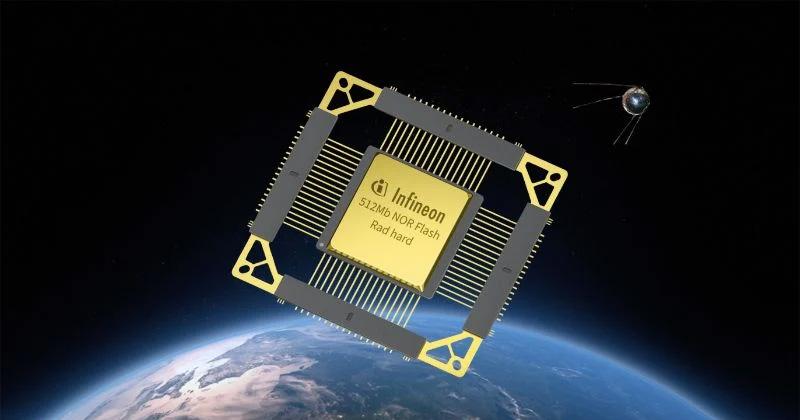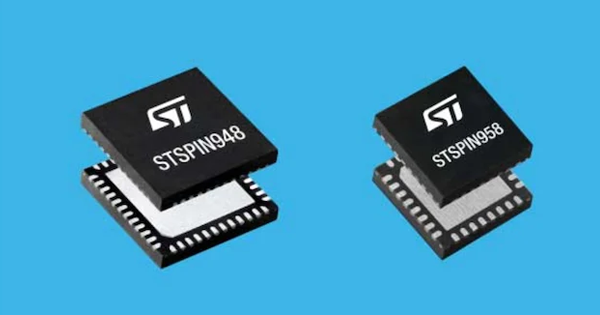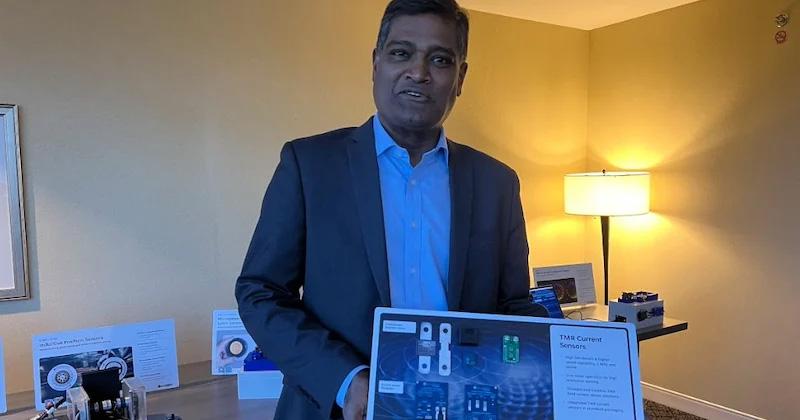
Nordic Simplifies Wireless Integration With New Low-Power SoCs
Nordic Semiconductor recently released three new wireless system on chips (SoCs): the nRF54L15, nRF54L10, and nRF54L05. These chips offer microcontroller processing and support for a broad set of 2.4-GHz wireless communications protocols.
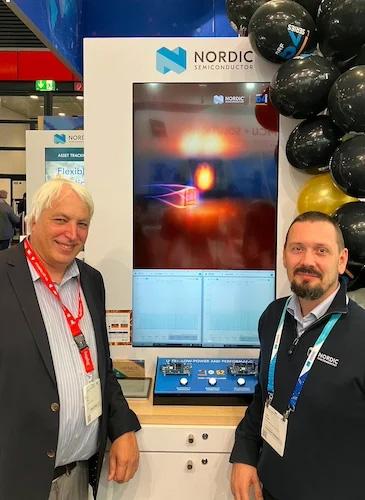
All About Circuits' Jeff Child and Nordic Semiconductor’s Pawel Kanafek discuss applications for the newest wireless SoC series at Electronica 2024.
Nordic designed the chips for Internet of Things (IoT) devices and larger systems that need modular wireless connectivity.
Easy-to-Integrate Wireless SoCs
The three chips start with an ultra-low-power, 2.4-GHz radio. They feature an Arm Cortex M33 at their core, running at 128 MHz to support a wide set of protocols and microcontroller functionality. All three come with non-volatile memory (NVM) and additional RAM. The devices' wireless capability and processing power allow them to operate as self-contained radio engines or fully functional wireless MCUs without requiring an external microcontroller.
![]()
New Nordic Semiconductor wireless system-on-chip models. Image used courtesy of Nordic Semiconductor
The basic memory specs of the three SoCs are as follows:
- nRF54L15: 1.5 MB NVM, 256 KB RAM
- nRF54L10: 1.0 MB NVM, 192 KB RAM
- nRF54L05: 0.5 MB NVM, 96 KB RAM
Depending on the model, the chips offer up to 35 GPIO in a package as small as 2.4 mm x 2.2 mm, 50 percent smaller than the prior generation nRF52840. Nordic also released the parts in a backward-compatible 6 mm x 6 mm QFN package.
All three include a global real-time clock (RTC), accessible even when the system is off. Other common features include a 14-bit ADC, high-speed serial, and security features. Recognizing potential threats to connected devices, Nordic embedded advanced security features to minimize vulnerabilities, including a secure boot, secure firmware updates, secure storage, a cryptographic accelerator with side-channel leakage protection, and tamper detectors.
Nordic Provides Wireless Support
The Nordic Semiconductor nRF series wireless chips may help developers easily add wireless connectivity to small systems and IoT devices. The chips have broad protocol support and a large library of compatible code created by Nordic, third parties, and the open-source community. Users can program the nRF chips using a native SDK. Earlier versions of the Nordic SoCs also have an Arduino core and Python support, which will likely be soon available for the new nRF54L series.
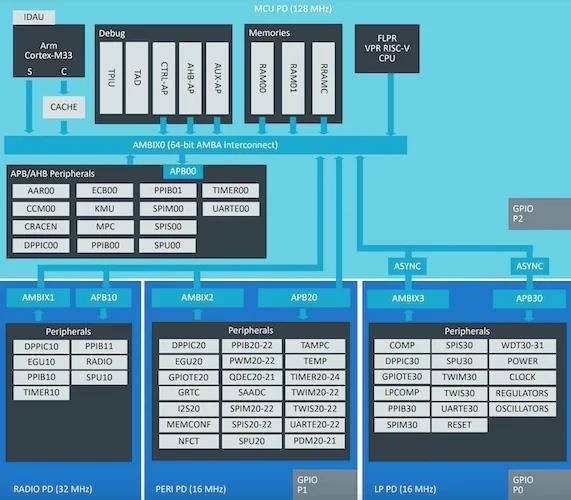
Block diagram of the nRF54L15, nRF54L10, and nRF54L05 wireless SoCs. Image used courtesy of Nordic Semiconductor
The nRF54L series supports Bluetooth LE, Bluetooth Mesh, Thread, Matter, Zigbee, Amazon Sidewalk, and several 2.4 GHz proprietary protocols. The chips also feature a maximum of 4 Mbps data rate and built-in hardware support for Bluetooth 6.0 and Bluetooth channel sounding.
The nRF54L series chips can add Wi-Fi by running the protocol stack for a companion nRF70 series Wi-Fi companion IC. The nRF70 series is Wi-Fi 6 compatible, enabling a two-chip solution that covers the latest in both Bluetooth and Wi-Fi.
Manifold IoT Applications for the nRF54L Series
Nordic configured the SoCs as a “wireless in a box” add-on for various electronic devices that must connect to Bluetooth and other common wireless network protocols. Designers can add one of the nRF54L chips to manage all necessary connectivity without complex bespoke designs. Such applications include appliances, security, tools, and entertainment systems with large, dedicated circuitry.
The Cortex M33 addition allows the chips to act as the entire processing and wireless engine for many smaller IoT applications, such as small device control, sensor communications, lighting, and other devices that don't require a lot of additional processing power. In such cases, the generous GPIO and peripheral set can often make an additional processor unnecessary.
Development Support
Nordic has also announced the nRF54L15 DK development kit to promote faster design and integration. The board breaks out all GPIO pins and includes a built-in debugger, a set of user-accessible switches, LEDs, and test points. The board comes with the nRF54L15 and has provisions for emulating the L10 and L05 variants.
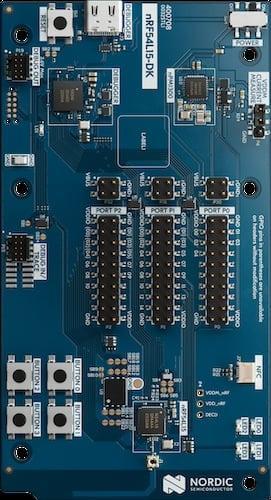
nRF54L15 DK development kit. Image courtesy of Nordic Semiconductor
Nordic envisions the new SoCs as useful processing additions to many Internet of Things devices. With their high processing capability and broad wireless support, the nRF series may significantly drop the barrier to entry for small wireless devices.

